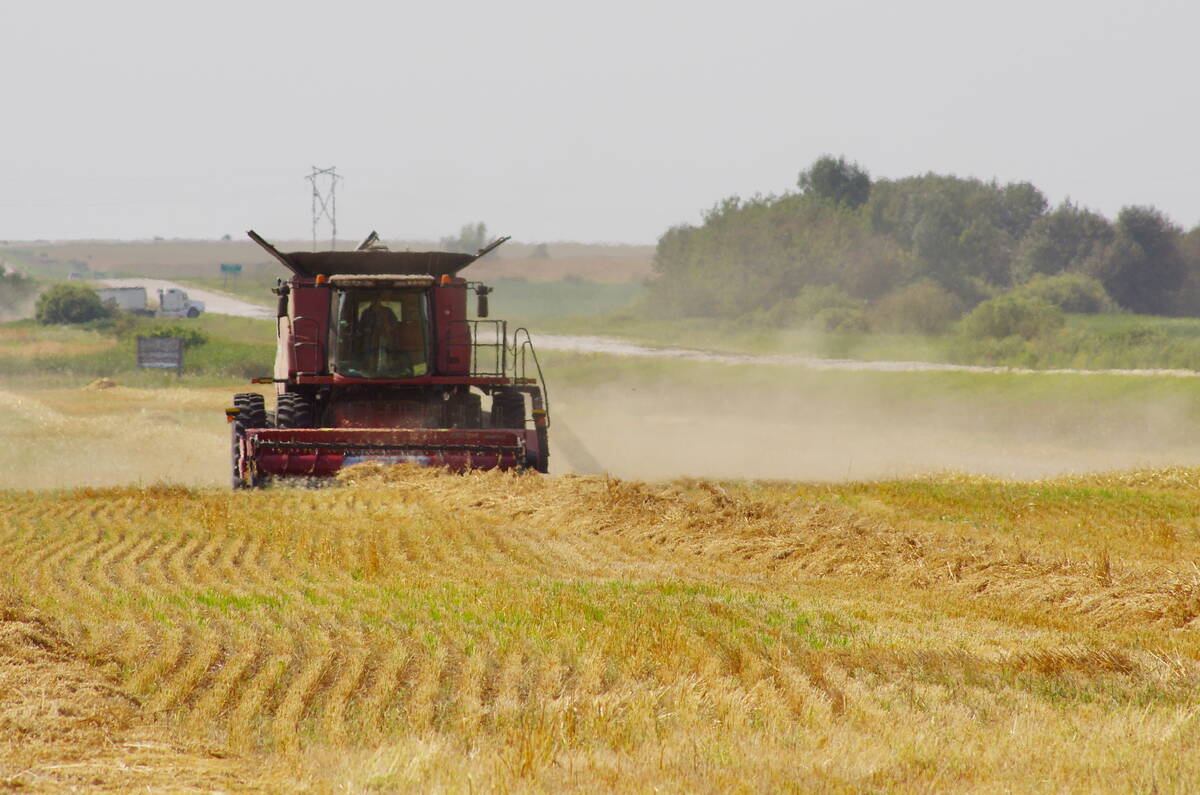Push air horizontally | Air tube design lets air take the path of least resistance
Cereal kernels are elongated and stack horizontally like cordwood. So isn’t it logical to blow air sideways from the bin walls instead of up from the floor?
It’s simply the next step in the process of re-thinking grain aeration, says Gary Schreimer, inventor of the Gatco Grain Air Tube and owner of the company. Although big bins are the primary target for horizontal aeration, he has installed the unique system on smaller units.
Air forced laterally from the perimeter wall flows easily through the stacked kernels, carrying heat and moisture to a Gatco grain tube in the centre of the bin. The air exhausts into the perforated vertical tube and up out the top of the bin.
Read Also

Herbicide resistance sprouts in Manitoba’s wild oats
Farmers across Manitoba this fall are gearing up for the latest salvo in what, for many, has become a longtime battle to beat out wild oats.
“When you have 50,000 bushels in a bin 60 or 70 feet tall, you know your floor aeration will not help the top half of the grain. Fans just can’t push air through that much mass,” says Schreimer.
“You’ve never seen a grain kernel standing upright, have you? They just don’t do that.
“Researchers figured out in 1964 that it’s 50 to 60 percent easier to move air through a grain mass if you blow it sideways.”
The inventor started developing his concept of air movement about eight years ago when he had 100 bins full of tough grain scattered all around his farm and no power running to most of them. It was cold and wet outside, so aeration didn’t even work in the bins that did have access to power.
Instead of installing the traditional cedar post in the centre to wick moisture out the top, he wanted something more effective. He fabricated perforated metal tubes and erected them in the centre of some bins. The idea worked far better than the old cedar posts and the Grain Air Tube was born.
But the centre tube didn’t address the challenge presented by big bins. That particular light bulb lit up three years ago when he encountered another miserable harvest.
“I put double the recommended horsepower fans on some bins and ran them for two weeks. When I checked, the top half of the grain was still tough.
“That’s when the idea hit. Why not run some kind of ductwork up the inside walls so you can push air from the outside perimeter toward the centre? For example, a bin is 19 feet wide and 38 feet tall. With conventional aeration, you need to push air up through 38 feet of grain.”
He fashioned some ductwork and installed it on a 7,500 bushel bin. He ran a two horsepower fan for two days. When he checked the grain, it was cool and dry.
“The idea behind horizontal aeration is to use a smaller fan to push air only nine feet to the centre grain tube. We found it works to run the side cones 60 percent up the side wall.”
Schreimer refers to the internal ductwork as “cones.” Each cone is nine inches wide at the backside where it bolts to the bin wall. It’s five inches deep and the front face is six inches wide. The overall length of each cone is always calculated to reach 60 percent of the way to the top of each bin.
“It blows most of the air out the sides of the cone and forces it to slide along the bin wall. The air collects heat and moisture before it flows to the grain tube in the centre. It’s sort of a turbine effect.
“Depending on bin size, we’ll use either four or six cones. We have just a single 18 inch fan blowing into an external manifold to feed the cones.”
Each cone is fed by an eight inch diameter pipe going through the wall and attaching to a manifold running around the outside of the bin. The cone is bolted through a re-enforcing plate on the inside and the outside to ensure the structural integrity of the bin is not compromised.
Schreimer installed his horizontal system on a pair of 65-foot high 50,000-bushel bins at the Gavin Green farm near Portreeve, Sask., last year. One bin held durum and the other held chickpeas.
“The industry recommendation calls for 50 h.p. on each bin for a full month. Gavin had a ten h.p. on each bin and ran them for two days.
“When he shut them down to check, the durum was safe for storage and most of the chickpeas were good. Chickpeas at the top of the 65 foot bin had spoiled. If we had started the fans sooner or run them longer, that probably wouldn’t have happened.”
Depending on bin size, the Gatco horizontal aeration system sells for $3,500 to $4,500.
Contact Gary Schreimer at 306-291-9960 or visit www.gatcomfg.com.

















